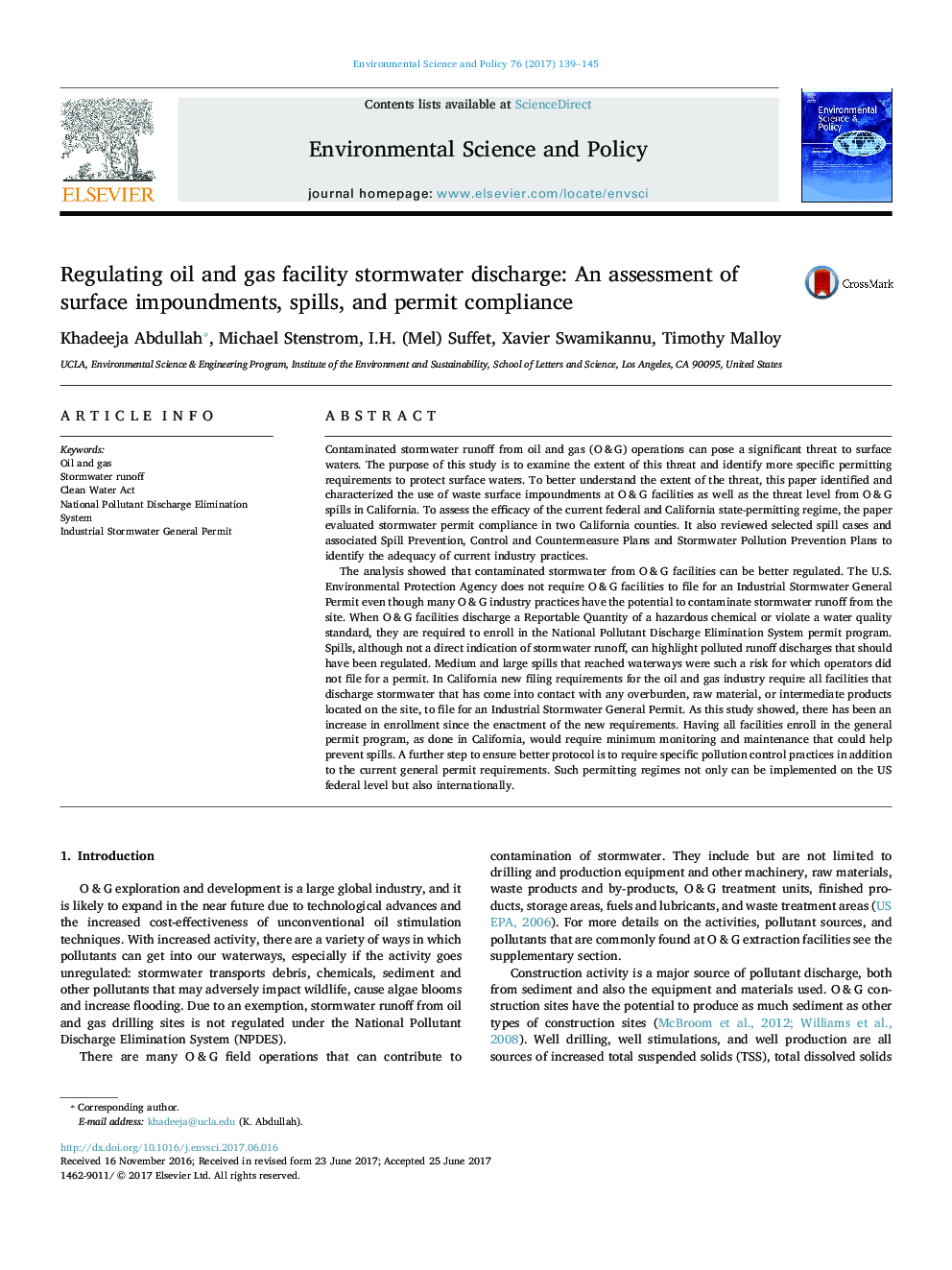| Article ID | Journal | Published Year | Pages | File Type |
|---|---|---|---|---|
| 5115723 | Environmental Science & Policy | 2017 | 7 Pages |
Abstract
The analysis showed that contaminated stormwater from O&G facilities can be better regulated. The U.S. Environmental Protection Agency does not require O&G facilities to file for an Industrial Stormwater General Permit even though many O&G industry practices have the potential to contaminate stormwater runoff from the site. When O&G facilities discharge a Reportable Quantity of a hazardous chemical or violate a water quality standard, they are required to enroll in the National Pollutant Discharge Elimination System permit program. Spills, although not a direct indication of stormwater runoff, can highlight polluted runoff discharges that should have been regulated. Medium and large spills that reached waterways were such a risk for which operators did not file for a permit. In California new filing requirements for the oil and gas industry require all facilities that discharge stormwater that has come into contact with any overburden, raw material, or intermediate products located on the site, to file for an Industrial Stormwater General Permit. As this study showed, there has been an increase in enrollment since the enactment of the new requirements. Having all facilities enroll in the general permit program, as done in California, would require minimum monitoring and maintenance that could help prevent spills. A further step to ensure better protocol is to require specific pollution control practices in addition to the current general permit requirements. Such permitting regimes not only can be implemented on the US federal level but also internationally.
Related Topics
Physical Sciences and Engineering
Energy
Renewable Energy, Sustainability and the Environment
Authors
Khadeeja Abdullah, Michael Stenstrom, I.H. (Mel) Suffet, Xavier Swamikannu, Timothy Malloy,
